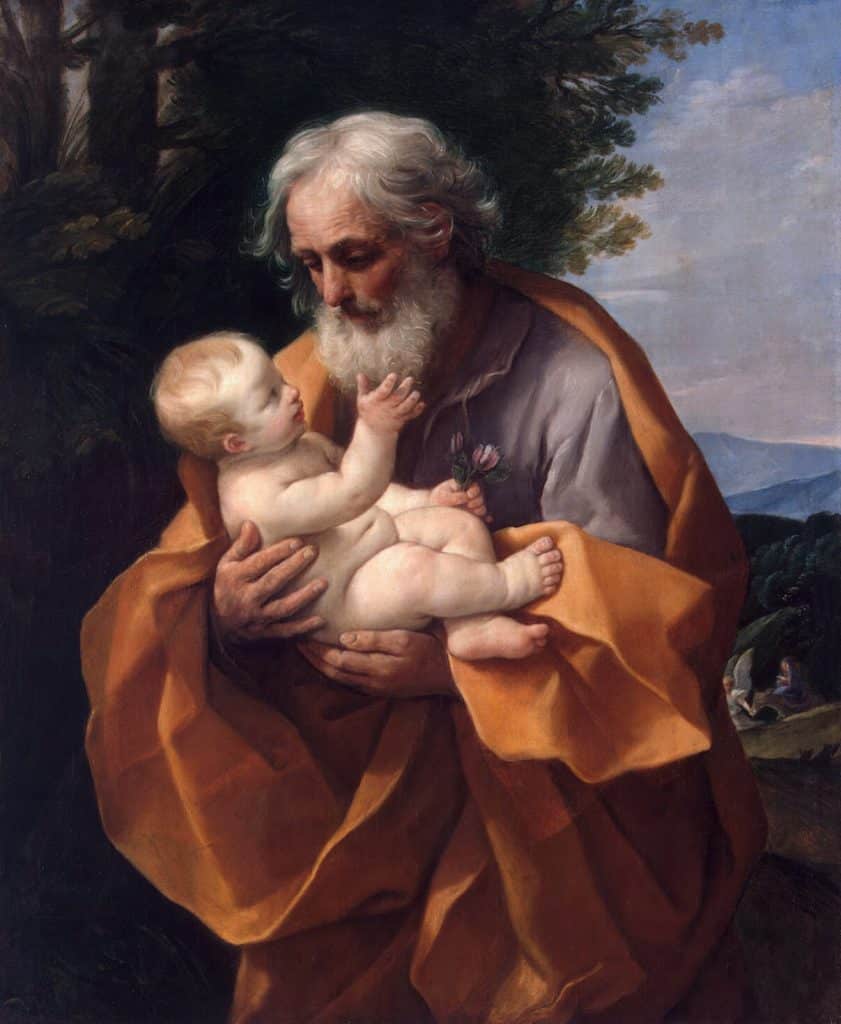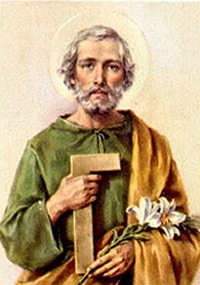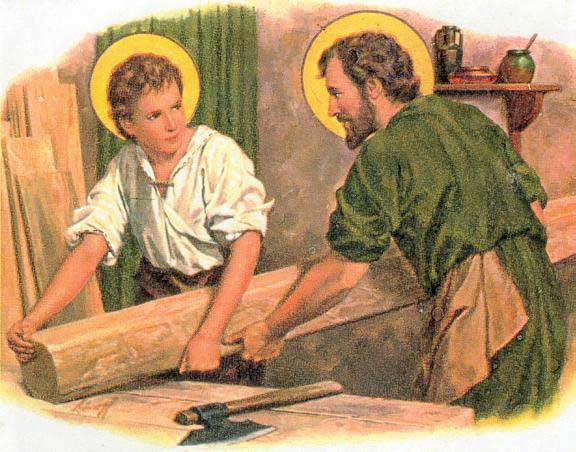December 19, 2016
Editor’s note: Paulist Fr. Rich Andre preached this homily for the 4th Sunday of Advent (Year A) on December 21 and 22, 2013, at then-Blessed John XXIII University Parish in Knoxville, TN. The homily is based on the day’s readings: Isaiah 7:10-14; Psalm 24; Romans 1:1-7; and Matthew 1:18-24.
As Catholics, we have a great reverence for Mary. At this time of year, we are naturally drawn to celebrating Mary’s unique role in salvation history. As we await the birth of Jesus, we’re going to think of her who carried him in the nine month before his birth. Most of our reflections about Mary come from the Gospel of Luke.
But while Luke focuses on Mary, Matthew invites us to spend time with Joseph. For the next three Sundays, we have the opportunity to focus on St. Joseph’s role in salvation history.
Almost everyone in the world has Joseph for a patron saint. He is the patron of the Western Hemisphere, as well as of the countries of Austria, Belgium, China, Korea, and the Philippines. His feast day is a big deal in Italy. Joseph is the patron saint of a happy death. He is the patron of all workers. Countless men around the world have been given the name Joseph at baptism, and others freely choose his name for confirmation. People bury statues with his image on them when they’re trying to sell their houses. And if that’s not enough, Joseph is a patron of the universal church.
Joseph has much to share with us. Let’s make the most of the next three weeks before Joseph recedes from our liturgical consciousness until Christmas of 2016.
The early Christians, like us, struggled to reconcile a few elements of the life of Jesus that didn’t make sense. Why does Jesus speak of his “brothers and sisters,” and why do other books of the New Testament call James “the brother of the Lord”? Why do we believe that Mary remained ever virgin? How could Joseph the carpenter support his family when he had to take them to Egypt (where he presumably didn’t speak the language), or when he moved to Nazareth (where he presumably didn’t have extended family)? Why is Joseph never mentioned during Jesus’ adult life?
Well, in the early centuries of Christianity, one solution was proposed to these problems in the form of a book called The Protoevangelium of James. (When you hear conspiracy theorists speak of the so-called “gospels” kept out of the Bible, this is one of those books they’re talking about.) According to The Protoevangelium of James, Mary was raised in the Jerusalem Temple itself from age 3 onwards. When Mary was 12, the men of Judea clamored to betroth her. One man, in attempting to win her hand, planted his staff and it immediately burst into bloom with oleander flowers. His name was Joseph.
Joseph, according to the Protoevangelium, was a wealthy, 90-year-old man who had been previously married to a woman named Melcha. Together, they had had 6 children, the youngest being named James.
We can laugh about this image of Joseph as a wealthy man, 78 years older than Mary… but it’s an image that still influences us more than we might care to acknowledge. Have you seen artwork of Joseph similar to this?
Sometimes, when I see the depictions of the older St. Joseph, I think of the leaders of our Church – men who are mostly older, white, and unmarried. We lament the limited role that women have in the leadership of our church. But it also seems as if we ourselves are most comfortable thinking of men as being saintly only if they are, ahem, emasculated.
This is not how I imagine Joseph. I think of Joseph as a young man, a devout Jew, who was betrothed to Mary, a woman he probably didn’t know too well. And then he learns that she’s pregnant, and he knows he’s not the father of the child. Matthew says that Joseph was “unwilling to expose her to shame” – well, that’s a nice way of saying that he decided not to have Mary stoned to death, as was prescribed by the Mosaic Law.
One undergraduate was in my office a few weeks ago, struggling with his doubts about the existence of God. He said, “Why can’t God speak to me like he spoke to Joseph?” Let’s read the passage together. “The angel of the LORD appeared to him in a dream.” So, he had a dream that an angel spoke to him. When he woke up, do you think Joseph might have thought that he had made the whole thing up?
However it happened, Joseph agrees to stick with Mary, to raise this child as his own. Joseph was a devout Jew, but there was nothing in the Torah to explain how to be the stepfather of God. Joseph had to make it up as he went along. Praying, trusting, doubting, experimenting, never having absolute certainty that he was following God’s will.
This year marks the 150th anniversary of the most famous homily ever given by Isaac Thomas Hecker, the founder of the Paulist Fathers. It was given on March 19, 1863 at the Church of St. Paul the Apostle in New York City, and the sermon was about… St. Joseph. Hecker claimed that Joseph is a great role model for each of us, struggling to figure out how to follow God. And I quote:
To find God and be one with God,
a solitary life in the desert was not necessary to St. Joseph.
He was in the world, and found God where he was.
He sanctified his work by carrying God with him into the work-shop…
Our age is not an age of martyrdom, nor an age of hermits,
nor a monastic age.
Although it has its martyrs, its recluses, and its monastic communities,
these are not, and are not likely to be,
its prevailing types of Christian perfection.
Our age lives in its busy marts, in counting-rooms, in work-shops, in homes,
and in the varied relations that form human society,
and it is into these that sanctity is to be introduced.
St. Joseph stands forth as an excellent and unsurpassed model
of this type of perfection.
With Hecker’s image in mind, perhaps we’d do better to concentrate on these images of St. Joseph, more of a regular guy.
We are the church. We are all called to holiness, including working stepfathers!
When people asked Isaac Hecker about his vision for the Church and for the Paulists, he simply referred to this 1863 homily. Back then, the idea that holiness was to be pursued in the workplace and the home might have sounded a bit surprising. Today, it doesn’t surprise us as much, thanks in part to the ideas of Vatican II, Pope Paul VI, and Pope Francis. Cardinal Egan was very enthusiastic to open the cause for the canonization of Isaac Hecker a few years ago. We can now officially call him a “Servant of God.” This weekend is the 125th anniversary of Fr. Hecker’s death on December 22, 1888. You can support his cause for canonization by learning more about him, and learning how relevant his ideas are to us today.
When he was a young man, St. Joseph found himself in a unique role in the salvation history of the world. He followed his dreams, traveled to exotic places, and continued to try to follow God’s will.
When Isaac Hecker contracted smallpox as a young boy, he believed that God had saved him so that he could do something great in service for God. He also had dreams, traveled to exotic places, and founded the Paulist Fathers more than 30 years later.
St. Joseph and Isaac Hecker struggled their entire lives to discern the will of God. Why should it be different for the rest of us? We have to make it up as we go along.
Trust in God.
Pray.
Doubt.
Experiment.
Follow your dreams.




